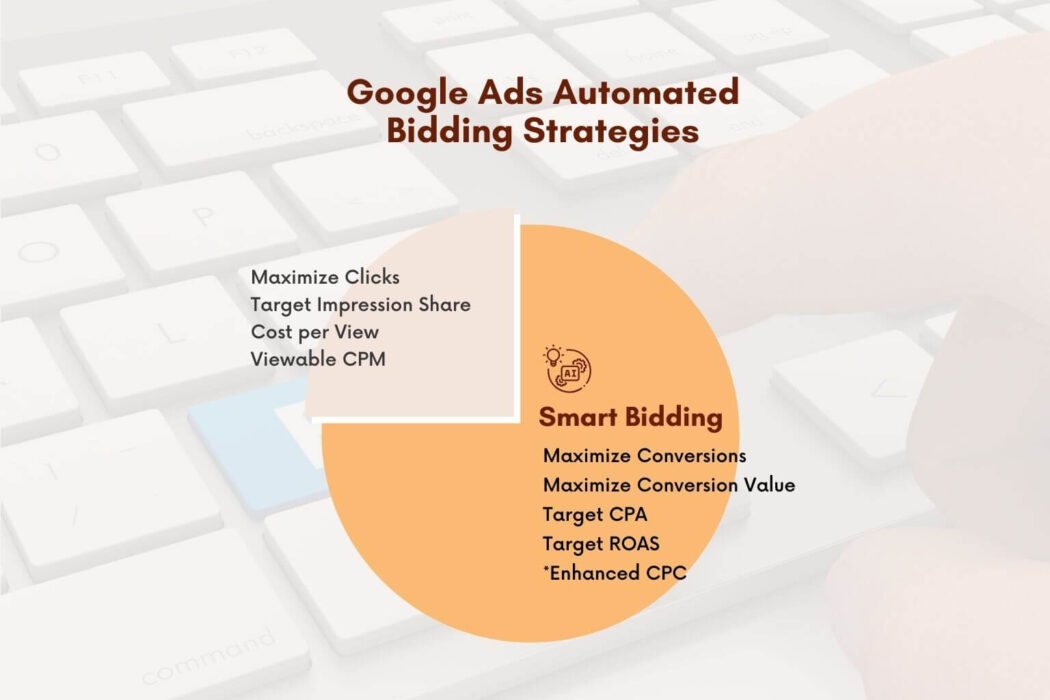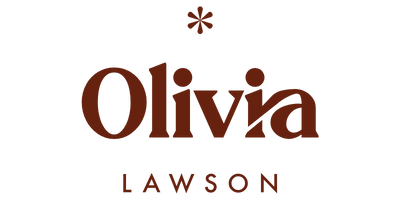One of the most powerful (and misunderstood) levers in your ad account is how you bid. Your bidding strategy is just as important as your ad copy or who you target because it determines how efficiently your campaign budget gets used.
Google offers two main flavors of bidding in Google Ads: manual and automated.
Manual bidding (you set the price) and Smart Bidding (Google uses data to do it for you). While manual bidding gives you more control, Smart Bidding uses real-time signals and machine learning to make decisions faster and well… smarter.
I started out in the era of hands-on, keyword-by-keyword bidding. It had its place. But today, Smart Bidding strategies help small businesses scale faster without obsessing over bid micromanagement.
In this guide, I’ll break down the different Smart Bidding strategies, when to use them, and what you need in place before it’s actually a smart move (pun intended).
Inside This Post
What is Smart Bidding?
Smart Bidding is an automated strategy powered by Google’s AI that uses machine learning to optimize for conversions or conversion value in real-time.
It adjusts your bids, with surprising finesse, at the moment of the auction based on a heap of contextual signals: device, location, time of day, browser, language, and even how likely someone is to convert.
Before you go any further, I need to share the single most important piece you need to know about smart bidding. You must have conversion tracking properly configured in your Google Ads account for it to be “smart”. Full stop. Non-negotiable.
Without conversion tracking your smart bidding becomes un-smart, which isn’t going to deliver the results you expect from Google Ads.
Related Post: What is Conversion Tracking?
5 Types Smart Bidding Strategies
Smart Bidding strategies are all the conversion-focused strategies powered by Google’s machine learning to automatically set the bid in real-time.
This means bids aren’t set at the individual keyword level but instead Google is adjusting the bid based on real-time data and the goal of your bidding strategy.
All Smart Bidding strategies are automated bidding, but not all automated bidding is smart bidding.

Maximize Conversions – Max Volume
This simple, yet aggressive bidding strategy is designed to squeeze as many conversions out of your daily budget as possible. Great for lead-gen campaigns that are just starting out or that don’t have enough volume to add a target CPA.
If you’re a service-based business like my client needing leads for their construction company, you’ll want to consider Maximize Conversions with new campaigns.
Maximize Conversion Value – Max $$$
Similar to Maximize Conversions, but optimized for $ value, not just volume. Ideal for businesses with revenue data tied to conversions. Think Shopify stores with $20 orders one day and $250 orders the next. Or tour operators with ticket sales of $20 or $300. If your business has variable purchase values, you’ll want to consider Maximize Conversion Value with new campaigns.
Target CPA (Cost Per Acquisition) – Stay under a specific CPA
The stronger sibling of Maximize Conversions. Ideal when you have solid historical conversion data and want to control efficiency.
The target CPA set on this strategy should be based on solid conversion data, not a CPA you think would be nice.
You’ll graduate to target CPA once you’ve hit the threshold of 30 conversions per month on Maximize Conversions. Set your target CPA at your 30 day CPA.
For example, if your campaign was achieving a CPA for $25 on Maximize Conversions over the last 30 days, set your target CPA to $25.
Target ROAS (Return on Ad Spend) – Hit a ROAS goal
Similar to target CPA, with target ROAS you set the target based on historical conversion data and Google adjusts bid to achieve your set goal. This smart bidding strategy is most applicable to businesses with accurate revenue data tied to conversions.
You’ll want to consider target ROAS once you’ve hit the threshold of 30 conversions per month on Maximize Conversion Value. You’ll set your target ROAS at the 30 day Conv. Value/Cost you were achieving on Maximize Conversion Value.
For example, if your campaign was achieving a Conv.Value/Cost of 5.5 on Maximize Conversion Value over the last 30 days, you’ll want to set the target ROAS to 550%
Enhanced CPC (Cost Per Click) – Hybrid of manual + conversion-based
Google announced in September 2024 that enhanced CPC would be going away. The transition started in October 2024 with the goal of all remaining eCPC campaigns to be converted to manual CPC by March 2025. As of publishing this post, I still see eCPC in some older accounts and my recommendation is to transition to an applicable smart bidding strategy, if appropriate.
Deprecating eCPC signals Google’s shift towards a greater reliance on machine learning and automated bidding strategies. Giving us yet another reason to ensure your conversion tracking is configured correctly before you hit publish on your ad campaigns.
Other Automated Bidding Strategies (aka Not Smart but Still Useful)
Maximize Clicks – Great for traffic, not for leads
Google will get you the most clicks possible for your budget. Good for awareness, not conversion-focused campaigns.
Think blog traffic, early-funnel content or building remarketing lists.
Target Impression Share
Google aims to maximize the visibility and reach of your ads. It’s a good option when you prioritize getting your ads seen often and at the very top, over all else.
This is best reserved for ads in high-competition and brand campaigns.
CPV (Cost per View) – Mostly for YouTube/video campaigns
Pay only when someone watches your video ad or interacts with it. Best for building brand equity through YouTube.
CPV bidding helps control video budgets, especially when paired with audience targeting.
Best Practices for Using Smart Bidding
Give it time
You need to be patient and give your campaign time to collect data. You’ll want to avoid making changes to your targets too frequently as this can interfere with the smart bidding’s ability to learn and optimize your bids.
Be realistic
Set a realistic target CPA or target ROAS. Your target should be based on what you are currently achieving and adjust from there. Setting your target CPA too low, or your target CPA too high can throttle your campaign into not spending at all.
Easy does it
Adjust your targets gradually based on your actual conversion data. Nudge your targets up or down by 10-20% increments at a time and collect conversions at this new target before adjusting any further.
When to Use Smart Bidding?
You have 30+ conversions/month
Google’s smart bidding algorithm needs data to work its magic. Less than that? You’re just guessing with fancier math.
You’re tracking the right conversions
Not just “visited contact page” or button clicks. I mean real, revenue-impacting actions like purchases, form fills, booked calls. Conversions are how you tell Google what you want more of and I don’t know about you, but I want more leads not just button clicks.
You want to scale or improve ROAS/CPA efficiency
Smart Bidding is built for optimization. When campaigns plateau, it can push past your manual ceiling but you must have enough solid conversion data for smart bidding to do its job well.
When to Avoid Smart Bidding?
Your conversion tracking is bojangled
Garbage in, garbage out. Don’t expect miracles if you’re feeding Smart Bidding junk data.
Your conversion volume is a sad trickle
Smart bidding strategies like tCPA and tROAS need data to do its job. As a rule of thumb, aim for at least 30 conversions per month before switching a campaign to tCPA or tROAS. Anything less and you’re asking Google to manage your budget with incomplete information.
You’re micromanaging micro-budgets with no volume
If your daily budget is $5 and your CPC is $2, Smart Bidding can’t stretch its legs. Manual bidding might serve you better.
Final Thoughts
Smart bidding is an excellent way to achieve profitable results and efficiency from your campaigns IF you have reliable conversion tracking and clear goals.
Need help deciding which smart bidding strategy would be best for your Google Ad campaigns? Book a Discovery Call and let’s work on a plan to improve your ad performance!
BOOK YOUR CALL